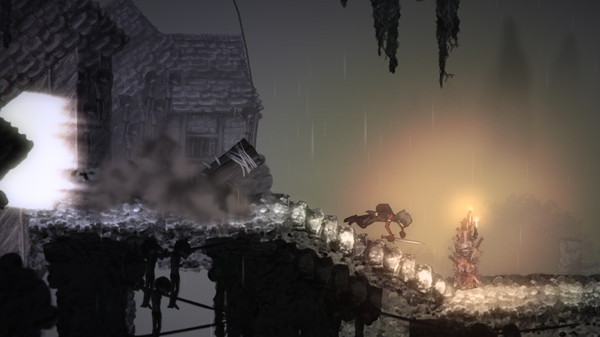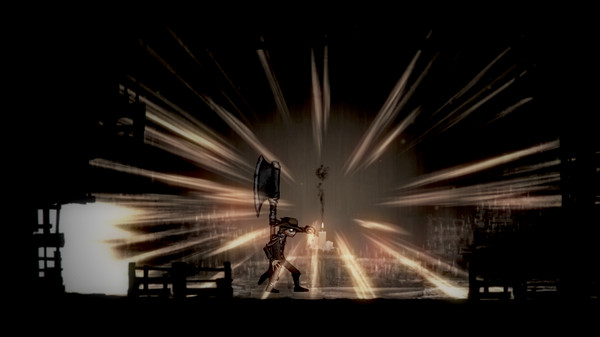We have brought you a Salt and Sanctuary Guide so that you can improve your gameplay. Follow our best tips if you are a beginner.
If you’re coming from the Souls games, many of the concepts will sound familiar. If you’re new to the ‘soul-like’ genre, things may seem a little confusing, or at least, you may not realize how much there is to this game. The depth of this information is impressive, and while you could learn through painstaking experience, you’ll be better off if you know what you’re dealing with when you’re dealing with it. We have put together this Salt and Sanctuary guide to help you understand the game better.
You may also like to read: Skyrim Survival Mode Guide for Skyrim Anniversary Edition, Dark Souls 3 – A guide for this nightmarish hellscape, Vampyr Guide – Best Tips and Tricks for beginners.
Be careful when choosing your build
In contrast to Dark Souls, where you just need to pass the first weapon requirements to use a weapon, Salt and Sanctuary need you to earn a specific skill from the skill tree to use various weapon classes. This applies to spells, prayers, and armor sets as well.
So think about what type of build you want to go for on your first run and write down the locations of crucial skill points on the tree before you start leveling. This will save you from having to spend a long time grinding to achieve a weapon skill you forgot to include in your character’s build.
Salt and Sanctuary Guide: Farm Salt

Do you always seem to hit a wall with a boss or just get killed haphazardly a bit too often? You don’t have to be afraid to fight some of the same enemies over and over again to gain salt. In Salt and Sanctuary, farming for salt early on can give you an advantage over your rivals and help you through some of the game’s opening areas.
Furthermore, once you’ve amassed a substantial amount of salt, don’t be afraid to return to your sanctuary to cash it in. Many times, I’ve discovered that instead of returning to a sanctuary, I’ll continue progressing further into an area, and before you know it, I’m dead and have lost everything I had on me. If you believe you are about to die and believe it would be better to return to your sanctuary to level up, don’t be afraid to do so.
Salt and Sanctuary Guide: Idols

You only have four spaces for NPCs when you find a Sanctuary or convert one to your creed, so choose wisely when constructing a new base. You don’t need to utilize the Stone Sellsword idol if you’re playing alone, as it’s only required for co-op play.
We recommend always using a Stone Guide at every Sanctuary feasible as a utility and to construct a helpful warp network. This not only allows you to teleport between Sanctuaries with a Guide, but it also improves item drops for the zone in which you are currently located. You only need one Stone Leader at a Sanctuary because her tasks don’t seem to alter until you finish the ones she has active.
Blacksmiths and merchants are usually useful for upgrading new weapons and selling overflow products, so keep them near an agricultural area. By roughly five hours into the game, you’ll have every type of NPC at a Sanctuary, so as long as you have Guides at each Sanctuary, you’ll be covered.
Salt and Sanctuary Guide: Calling Horn
A ‘calling horn’ is a tool that allows you to travel quickly from any location to any Sanctuary with a Guide. You can utilize the calling horn, go to the Sanctuary with a Guide, and then use the guide to go wherever you want because a Guide allows you to fast travel to any Sanctuary. Even better, calling horns are only 100 gold each, so you can stock up on them every time you use this technique of fast travel.
Salt and Sanctuary Guide: NPC and Weapon

Each NPC serves a certain purpose. Some are self-evident, such as the Merchant or Blacksmith. These let you buy various consumables or enhance your equipment, as the case may be. Others, such as the Sellsword and the Alchemist, have a less obvious function. The Sellsword allows you to play local co-op because the second player controls the NPC directly. You can ‘transmute’ your weapons with the Alchemist. This isn’t an upgrade like at the Blacksmith, but rather a complete transformation of one weapon into another.
When you convert a weapon, the new one takes the place of the old one, therefore you lose the old one. As a result, don’t convert a weapon you like to use or that you’ve enhanced. A weapon of any type can be transmuted into another weapon of the same type. So, if you like a certain spear and want a better one, transmute a spear you don’t use into the new one.
Salt and Sanctuary Guide: Class

Once you’ve progressed past the first few hours of a Souls-like game, classes usually don’t matter all that much. With the amount of experience you’ll gain in Salt and Sanctuary, you’ll be able to swiftly switch your playstyle if you don’t like one of the classes. That said, I always recommend that newcomers to Souls-like games avoid choosing anything too bizarre.
We recommend deciding on a class early on, such as Paladin, Knight, or Cleric, and staying somewhat in line with the skills that each of those classes specializes in as you level up. While deciding on a class like Chef may appear to be fun, new players will most likely run into trouble very fast. Keep things basic at first, and don’t pick a class that will cause you too much trouble until you’ve figured out how the battle mechanics work.
Dodge roll, and Parry play important role

A good defense is the best offense, and this is especially true in Salt and Sanctuary. While it’s tempting to just hack and slash your way through every adversary you come across, being patient and understanding when to strike can undoubtedly help you out in the long run. You have the choice of using a dodge roll or a parry maneuver in Salt and Sanctuary. Learning how to roll away from opposing strikes should be one of your first goals in the early game, as it will serve you well throughout the game.
Parrying is a little harder to perfect, but once you do, you’ll be able to take down adversaries with ease. After landing a parry, you can unleash a devastating assault. You’ll be better off if you can learn to use these maneuvers as soon as possible.
For more Guides, Tips, and Tricks
- Mages of Mystralia Guide: Best Tips and Tricks
- Pathfinder Kingmaker Guide – Best Tips and Tricks for Beginners
- Prey Beginner’s Guide – Best Tips and Tricks
Check out our Video Games Guide Section for more dedicated guide
